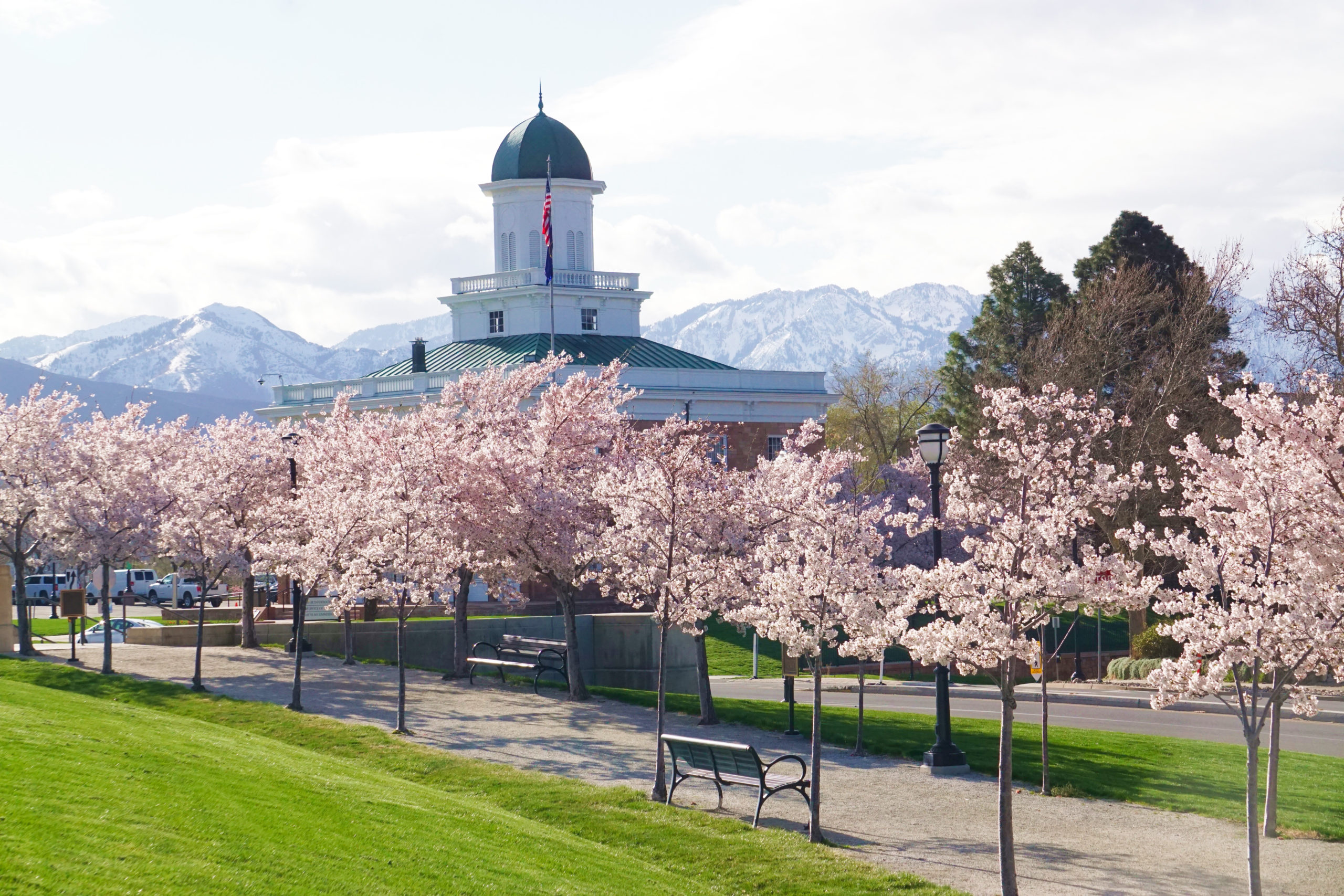Yoshino Cherry Trees
When to Visit
The Utah State Capitol’s Yoshino cherry trees typically blossom in the beginning weeks of April.
They usually last for a few weeks, depending on weather conditions.
You can follow along with their journey on the Utah State Capitol Instagram story.

Timeline of Blossoming Trees on Capitol Hill
1931 – Flowering cherry trees were purchased from a Seattle, WA nursery and planted on Arbor Day that year, the last Friday in April.
Post-WWII c. 1945 – Japan gifted Kwanzan cherry trees to the Capitol, as a symbol of friendship between the two nations. In Japan, the trees symbolize the impermanence of life. The trees blossom very rapidly in Japan and last for only a few short weeks.
2007-2008 – During 2004-2008 Capitol Restoration:
The Kwanzan cherry trees were struggling and reaching the end of their life. It was decided to best plan would be to replace the trees following the original plans for the grounds.
433 Yoshino cherry trees were grown in Portland, Oregon specifically for the Utah State Capitol. They were grafted for a straight trunk so that branches come out the top with blossoms and the desired formation over the path takes place when in bloom, if pruned correctly.
The Yoshino trees were then planted around the .7 mile Memorial Walkway encircling Capitol Hill.
Symbolism of Cherry Trees